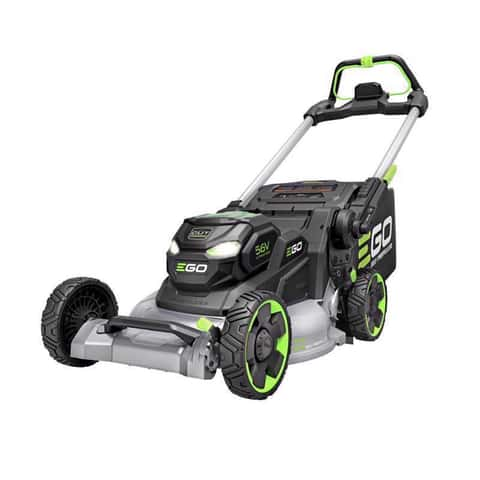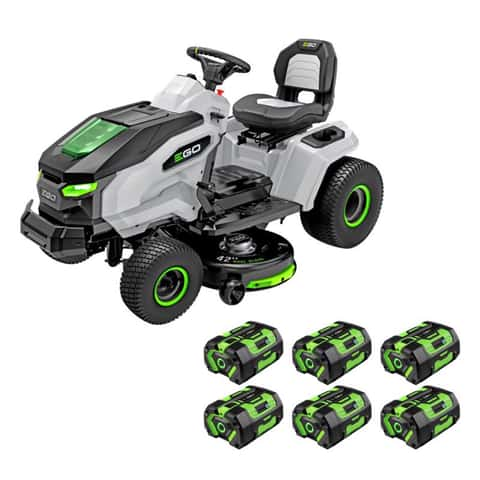Discover the Best Lawnmowers at Marin Ace Hardware for a Pristine Lawn
Transform your yard into a lush, green paradise with Marin Ace Hardware’s top-notch selection of lawnmowers. Whether you’re maintaining a small patch or tackling acres of grass, Marin Ace Hardware in San Rafael, CA, offers a range of high-performance mowers to suit your needs. From self-propelled models to zero-turn riding mowers, find the perfect machine to keep your lawn in pristine condition. Visit Marin Ace Hardware for expert advice and superior products for all your lawn care needs.
“At Marin Ace Hardware, we pride ourselves on providing our customers with the best lawn care equipment available. Our selection of lawnmowers is carefully curated to ensure you have the ideal tools for a beautifully maintained lawn,” says Andrew Ungs, Manager of Marin Ace Hardware.
EGO Power+ LM2206SP 22 in. 56 V Battery Self-Propelled Lawn Mower Kit
The EGO Power+ LM2206SP offers exceptional cutting performance with its powerful 56V ARC Lithium battery, delivering up to 70 minutes of runtime. Its 22-inch cast aluminum deck provides durability with a lifetime warranty. The Select Cut Multi-Blade Cutting System allows for customizable cutting, and the mower features LED controls for speed selection. With eight cutting height positions and EGO Touch Drive self-propelled technology, it’s perfect for yards sized 1/4 to 1/2 acre.
“This mower is a game changer for anyone looking for a powerful, environmentally friendly option. It’s easy to use and incredibly efficient,” says a satisfied customer from Marin Ace Hardware.
Toro TimeMaster 21219 30 in. 223 cc Gas Self-Propelled Lawn Mower
The Toro TimeMaster 21219 is designed for large yards, featuring a 30-inch cutting deck and a Briggs and Stratton OHV engine. Its dual-force cutting system and personal pace feature make mowing efficient and easy. The mower includes a washout port for simple cleaning and is CARB compliant, making it suitable for yards of 1/2 acre or more.
“With its wide cutting deck and powerful engine, the Toro TimeMaster makes tackling large lawns a breeze,” comments Andrew Ungs, Manager of Marin Ace Hardware.
Craftsman CMGM231202 21 in. 163 cc Gas Self-Propelled Lawn Mower
The Craftsman CMGM231202 features a 163cc Briggs & Stratton engine with one-step starting, making it easy to use. With 3-in-1 deck capabilities for side discharge, mulching, or bagging, and a 21-inch steel deck, it offers versatility for various lawn types. The rear-wheel drive provides enhanced traction, suitable for yards sized between 1/4 to 1/2 acre.
“This Craftsman mower is reliable and offers great value for its performance and ease of use,” says a loyal customer from Marin Ace Hardware.
EGO Power+ T6 TR4204 42 in. 56 V Battery Riding Mower Kit
The EGO Power+ T6 TR4204 is an electric riding mower with 56V ARC Lithium batteries, offering power equivalent to a 21-horsepower gas mower. It features dual brushless motors, a 42-inch steel deck, and customizable settings via a digital LCD display. With a maximum speed of 6 mph and a 15-inch turning radius, it’s perfect for mowing up to 1.5 acres per charge.
“This electric riding mower is a top choice for those seeking a quiet, emission-free mowing experience,” notes Andrew Ungs, Manager of Marin Ace Hardware.
Toro TimeCutter My Ride 75755 50 in. 708 cc Gas Zero Turn Riding Mower
The Toro TimeCutter My Ride 75755 offers professional performance with its MyRide suspension system and a 23 HP Toro engine. With a 50-inch deck and zero-turn capability, it reduces mowing time significantly. Designed for yards up to 4 acres, it includes Smart Speed technology and a durable deck design.
“This zero-turn mower is designed for comfort and efficiency, making it a favorite for large properties with obstacles,” says a Marin Ace Hardware team member.
For all things Ace Hardware, please visit acehardware.com.





















